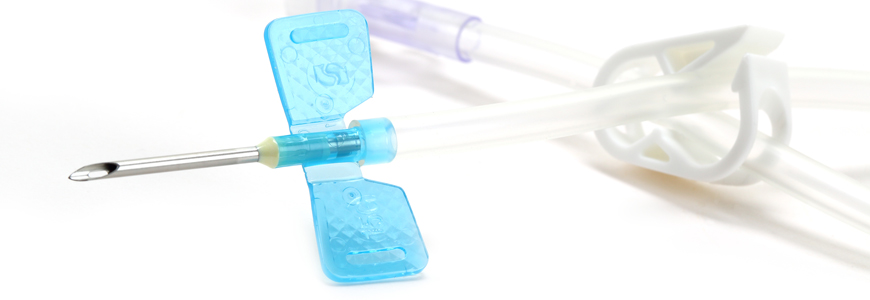A collaboration between a vascular surgeon and an interventional radiologist attracts nationwide referrals to Duke from hemodialysis patients and others with vein access limitations caused by central venous occlusion (CVO).
Ellen D. Dillavou, MD, a surgeon treating the full spectrum of vascular disorders, specializes in procedures to create hemodialysis access in patients with CVO and related conditions. She works closely with interventional radiologist Charles Y. Kim, MD, who has pioneered innovative venous recanalization techniques and imaging protocols to help high-risk patients with occlusions.
Patients are often referred to Dillavou and Kim because of the need for specialized, sometimes high-risk care to create or maintain hemodialysis access, typically the result of failing fistulas or grafts associated with central venous stenoses and occlusions.
"Many of the patients referred to me present as extremely complex access cases,” Dillavou says. “They often arrive worried because other physicians have told them they don’t have options to create access for continued hemodialysis. But I reassure them that Dr. Kim and I usually find a way to help.”
In addition to CVOs, patients also present with aneurysms and pseudoaneurysms—all related to long-term hemodialysis treatment. The conditions also occur in patients after they have undergone kidney transplants.
For patients with complex central occlusions, Dillavou refers patients initially to Kim, who collaborates closely with diagnostic radiologists to design specialized CT and MR protocols to image the veins. This advanced level of specialized imaging, Kim says, is not available at most medical centers. Kim then uses complex, innovative techniques to traverse the occluded veins and place an in-dwelling catheter.
Advanced pre-procedure planning helps achieve high success rates
This allows Dillavou to complete the procedure during a second surgery by traversing the occluded veins through this catheter with wires in order to place a Hemodialysis Reliable Outflow (HeRO) graft (Merit Medical, South Jordan, UT), which is often required to rescue a failing fistula, she says. “The HeRO graft has proven a valuable tool but inserting a HeRO graft is not a skill set every surgeon is comfortable with,” Dillavou says.
The goal, she says, is to establish permanent access for hemodialysis and avoid tunneled catheters if possible. Kim adds, “Without the HeRO graft, patients often have no choice other than a lifelong hemodialysis catheter, which incurs numerous negative and potentially life-threatening sequelae. In fact, failure to complete this two-step procedure can result in complete loss of dialysis options, which is fatal.”
Kim and Dillavou acknowledge the relative risk of the procedures, but see them as a final option for patients who understand the consequences of losing dialysis access.
“I routinely utilize a variety of rare and new techniques that are considered high-risk by traditional standards,” Kim says. “However, our advanced pre-procedure imaging and vast experience with these procedures enables us to safely achieve excellent success rates.”
Kim says the team-based approach is a logical approach, but it is not used regularly at other institutions. “Thanks to the wonderful teamwork between Dr. Dillavou, interventional radiology, and diagnostic radiology, we are able to successfully manage patients who otherwise have no options at other centers,” Kim says.
